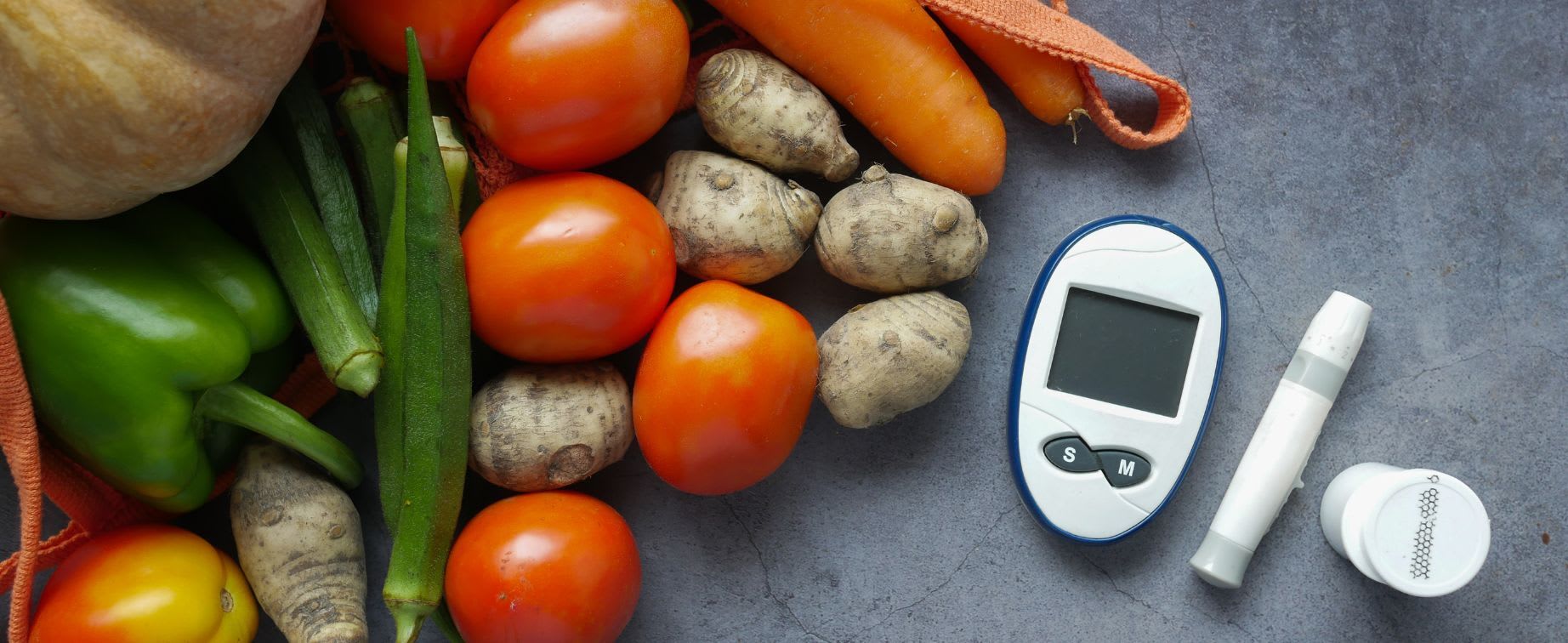Table of Contents
II. Lifestyle Habits to Manage Type 2 Diabetes
III. Specific Measures for Gestational Diabetes
IV. Type 2 Diabetes and Hypertension Control
V. Foot and Oral Health with Type 2 Diabetes
VI. Managing Your Emotional Well-Being with Type 2 Diabetes
If you’ve been diagnosed with diabetes, the good news is that effective management of this condition can help prevent serious complications and allow you to live a long, healthy life.
This article will explore key strategies for preventing and minimizing complications, focusing on glucose management, lifestyle habits, gestational diabetes, and caring for your foot and oral health.
Glucose Management
Maintaining steady blood sugar levels is key to managing diabetes and living healthily. Keeping your blood glucose within your target range can help prevent or delay long-term complications like kidney disease, nerve damage, vision loss, and heart disease.
While it may seem daunting, effective lifestyle adjustments and medication strategies can help keep your blood sugar in check.
- Aim for a healthy lifestyle: Incorporate regular physical activity and adopt a healthy diet to aid in weight loss. Excess weight contributes to insulin resistance, leading to elevated blood glucose levels. [1]
- Take prescribed medication: Follow your medication plan diligently. Take medications as directed, at the proper times and dosages. Don't hesitate to consult your healthcare provider regularly to assess how well your current regimen is working.
Lifestyle Habits to Manage Type 2 Diabetes

Managing type 2 diabetes starts with making small, sustainable changes to your daily habits. Adopting a healthy lifestyle can keep your blood sugar in check and prevent complications down the road.
Weight Management and Physical Activity
Physical activity can reduce your risks of long-term diabetes complications such as heart disease or stroke. Decreasing your body weight by only 5 to 10% can make it easier to manage blood glucose levels. [2]
You don't need fancy equipment or a gym membership to get active. Small changes to your daily routine can make a big difference.
- Avoid sitting for long periods of time: Try to get up and move around every 20 to 30 minutes if you’ve been sitting or lying down. Building activity into your day helps manage blood sugar.
- Break it up: Moderate exercise for 150 minutes per week, such as brisk walking, lowers A1C levels. The key is to break it up into manageable chunks, like 30 minutes of exercise five days a week.
- Check with your doctor before ramping up exercise intensity beyond brisk walking. If ketones are present in your urine, physical activity may need to be put on hold, as it can spike blood sugar when ketones are in play. [2]
Healthy Eating and Balanced Diet
When managing diabetes, there's no one-size-fits-all "diabetic diet." The key is finding a way of eating that keeps your blood sugar steady.
- Eat carbs with a low GI index: The good news is that you can still enjoy carbs in moderation. Just focus on carb sources that have a low glycemic index, meaning they break down slowly and don't spike your blood sugar as much. Great options include whole grains like oatmeal and quinoa, fruits and veggies, beans, and lentils.
- Eat a low-carb, high-protein diet: By avoiding carbs with a high GI index, such as bread, pasta, rice, desserts, and sugary drinks, you can potentially lower the amount of insulin you require.
- Pay attention to portion sizes: Aim for small, balanced meals spread evenly throughout the day. This helps keep your blood sugar steady and prevents extreme highs or lows. [3]
Specific Measures for Gestational Diabetes
Gestational diabetes often comes as a surprise to expectant mothers. Even if you’ve never had diabetes before, your body’s changes during pregnancy can lead to high blood sugar.
Your doctor will likely test you for gestational diabetes between weeks 24 and 28 of pregnancy to catch it early. {[4}} If the test results return positive, work closely with your medical team to keep your blood sugar under control.
You can also take proactive steps to manage blood sugar at home:
- Monitor your blood sugar frequently: Pregnancy causes blood sugar levels to change quickly to meet your body’s needs. It’s crucial to check your blood sugar often.
- Follow a gestational diabetes meal plan: Meet with a dietitian to create a nutrition plan focused on lean proteins and complex carbohydrates. Spread low glycemic index carbohydrates evenly over the day and pair them with protein or fat to avoid blood sugar spikes.
- Stay physically active: Exercise is a great way to control blood sugar. Aim for at least 30 minutes of moderate-intensity activity per week but consult your doctor before starting any exercise regimen.
- Take medication as prescribed: If diet and exercise are insufficient, your doctor may prescribe insulin injections. Carefully follow the timing and dosage of any medication. [4]
Type 2 Diabetes and Hypertension Control

Diabetes and hypertension have an interesting relationship. Each condition can increase your risk of developing the other.
- High blood sugar levels associated with diabetes can damage the blood vessels and nerves that control heart rate and blood pressure. This makes hypertension more likely.
- High blood pressure strains the cardiovascular system, which can worsen diabetes complications like kidney disease. [5]
If you have diabetes, aim for a blood pressure around 130/80 mmHg or lower. [6] Reaching this goal takes lifestyle adjustments, but small changes can make a big difference.
- Limit sodium intake: Limiting salt to less than 2,000 mg daily is ideal. Be mindful of processed and packaged foods, as sodium is added as a preservative.
- Follow the “DASH” diet to manage or prevent high blood pressure. This balanced diet focuses on nutritious whole foods like vegetables, fruits, whole grains, low-fat dairy, and lean proteins. It limits saturated fat and trans-fat, which can raise your blood pressure.
- Stay active: Aim for a mix of aerobic exercise like walking or swimming and resistance training to build strength. Being physically active most days of the week helps manage blood pressure. [6]
Foot and Oral Health with Type 2 Diabetes
If you have diabetes, taking good care of your feet and teeth is critical. High blood sugar levels can damage blood vessels and nerves in the feet, making you more susceptible to dental problems.
Caring for Your Feet
About half of people with diabetes will eventually experience some nerve damage, especially in their legs and feet. Your risk of nerve damage increases with the following conditions:
- High blood pressure
- High cholesterol
- 40 years of age or older
- Being overweight
- High blood sugar that’s hard to manage
- Having diabetes for a long time [7]
Taking care of your feet is one of the most important things you can do when living with diabetes. High blood sugar levels can damage nerves and blood vessels, putting your feet at risk for problems like ulcers and infections. If an infection becomes severe, amputation of the toe, foot, or part of the leg may be necessary to stop it from spreading. [7]
Fortunately, there are many ways to protect your feet and avoid complications. Here are some tips:
- Wash your feet everyday: Rinse your feet with warm water and apply lotion everywhere except between your toes, as this area can harbor infection.
- Check your feet: Check for cuts, swelling, redness, sores, blisters, calluses, and corns. If you see anything unusual, contact your doctor promptly.
- Improve blood flow to your feet: Wiggle your toes and elevate your feet when sitting to improve circulation.
- Get your feet checked regularly: Visit the foot doctor for a comprehensive exam to check for loss of feeling or blood flow issues. [7]
Practicing Good Oral Hygiene
Diabetes makes you prone to a variety of infections, which can impact your oral health. High blood sugar can increase your risk of:
- Gum disease: With diabetes, high blood sugar reduces your body's infection fighters and slows healing. At the same time, gum infections raise blood sugar. So, keeping your gums healthy helps control your diabetes, while controlling your diabetes protects your gums.
- Tooth decay: Bacteria in your mouth interact with sugars to make acids that corrode tooth enamel. Because diabetes results in elevated blood sugar, more of these sugars are available for acid production.
- Dry mouth: Saliva flow can be impaired by diabetes, leading to dry mouth. [8]
To prevent these complications, managing your blood sugar levels and practicing good oral hygiene is important. Commit to practicing good oral care.
- Monitor your dental hygiene: Look for any signs of redness, swelling, or bleeding in your gums, which could indicate early gum disease. If you notice any changes, be sure to report them to your dentist right away.
- Aim to brush your teeth twice daily for two full minutes each time. Use a soft-bristled toothbrush and fluoride toothpaste to remove plaque and bacteria gently.
- Floss between meals to remove plaque and food
- Scrape your tongue daily
- If you wear dentures, remember to take them out and thoroughly clean them every day [8]
Managing Your Emotional Well-Being with Type 2 Diabetes

Receiving a diabetes diagnosis often triggers a rollercoaster of emotions. You may grieve the loss of your old life without this chronic condition. Monitoring blood sugar, counting carbs, and giving yourself injections may feel burdensome. Recognize when you're feeling emotionally exhausted so you can take steps to recharge.
Connecting with others living with diabetes can provide a sense of validation and understanding. Joining support groups or online communities can be a great way to share experiences, exchange tips, and find comfort in knowing you are not alone.
Conclusion
Managing your blood sugar is a marathon, not a sprint. Though it can feel daunting at first, keeping your glucose levels in check can become second nature with time and commitment. The key is consistency. Small, sustainable changes to your daily habits add to big, long-term results.
If you have any more questions about type 2 diabetes, our dedicated diabetes blog covers various topics.
The content provided in this article is based on thorough research and in some cases, reviewed by a medical professional. Our goal for the information is to provide helpful, general health informational. It is not intended as a substitute for professional medical advice.
